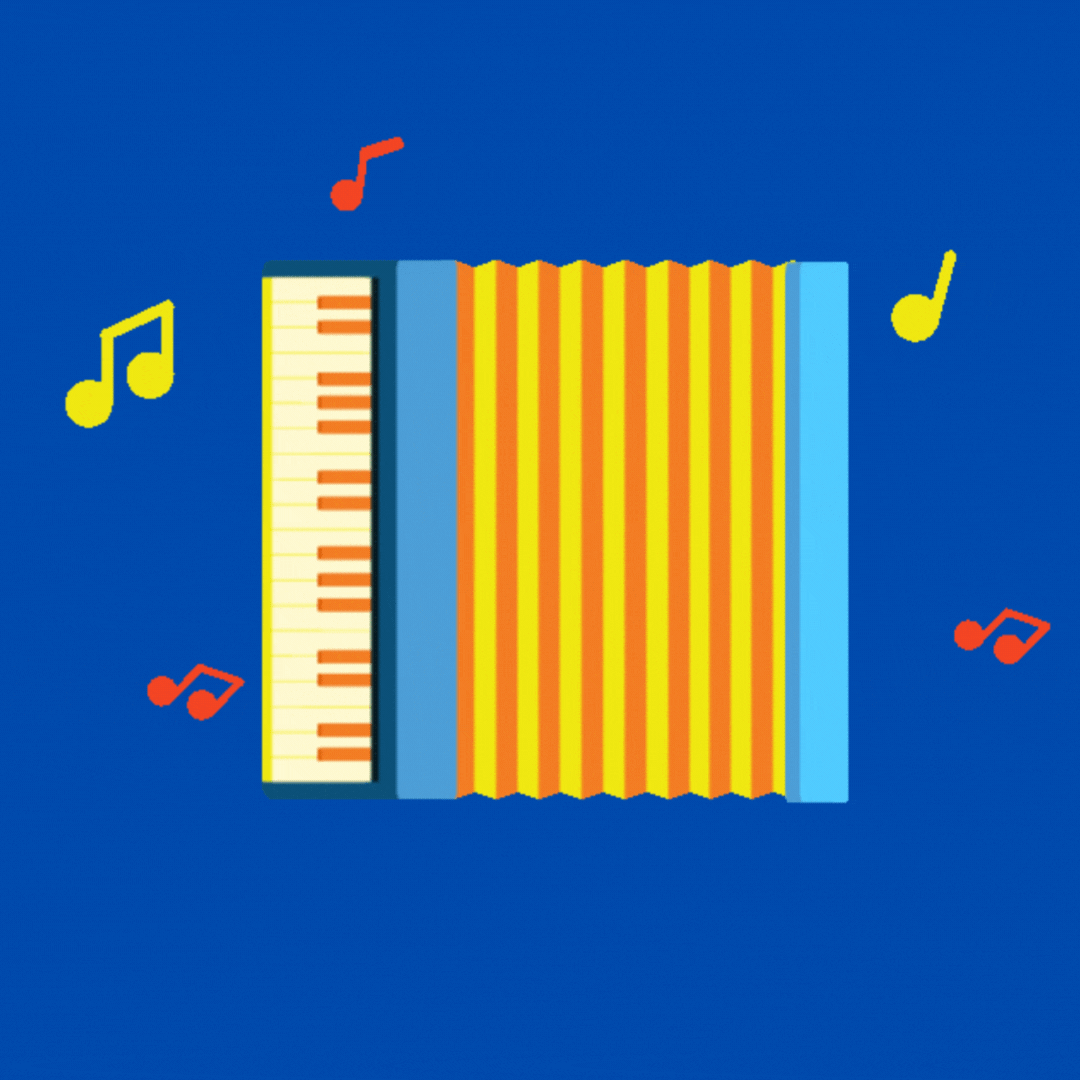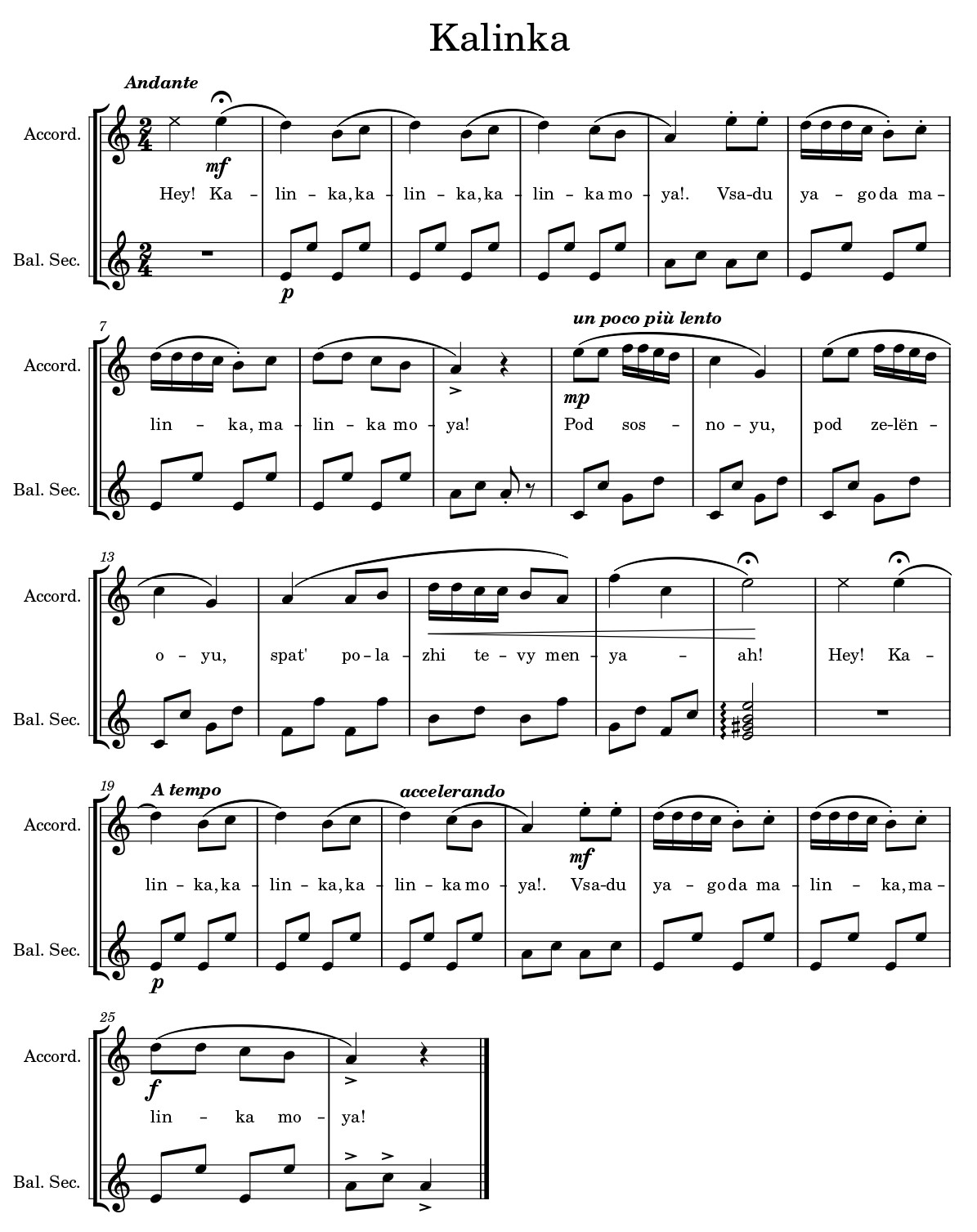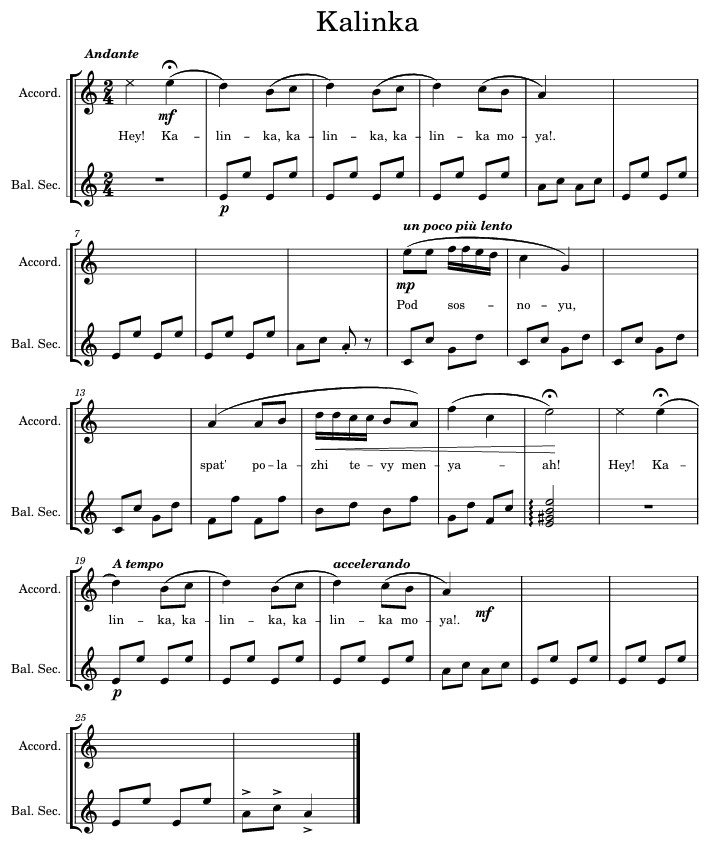Reading, memorizing and singing
 There is a song here to sing the notes according to their pitch. Pay attention to symbols indicating tempo, agogics and dynamics and of course, take into account minims, crotchets, quavers and semiquavers. You can use the score, the sound file or a video, depending on the help you need.
There is a song here to sing the notes according to their pitch. Pay attention to symbols indicating tempo, agogics and dynamics and of course, take into account minims, crotchets, quavers and semiquavers. You can use the score, the sound file or a video, depending on the help you need.
Exercise 1: Kalinka
You've got a stave here to keep the beat with hand gestures while you sing the notes. Then repeat it while you listen to the sound file to help you feel the key signature and you can also watch the video with the score. Watch out for semiquavers! Click on the words accordion and balalaika to learn something more about these instruments used in the score.
This second part requires working with semiquavers and crotchets. If you examine the score carefully, you will find several groups of four semiquavers. Sing the notes again but this time substitute the four semiquavers with a crotchet (use the note of the first semiquaver). Here you have the score to help you and the sound file.
Exercise 2: Kalinka silent parts
 Now you have got the same song but including some silent bars. Sing the notes and stop at those bars while you silently keep the beat to start singing in time.
Now you have got the same song but including some silent bars. Sing the notes and stop at those bars while you silently keep the beat to start singing in time.
Feedback
False
It is a false statement. If you look trhough the score carefully, you will see: Andante, un poco più lento, A tempo, acelerando, which are agogic markings.
Feedback
True
The sentence is true. Count carefully and you'll find 28 semiquavers, every crotchet is equal to four semiquavers so 28/4=7.
Feedback
False
The sentence is false. The song in the sore has got three parts: A - from the beginning to bar 9, B - from bar 10 to bar 17 and again A -from bar 18 to the end.
Feedback
False
The statement is false as one of its parts is note true. The first symbol indicates that notes should be played arpeggio, the next symbol is an accidental (sharp) but the chord is not unison, it is a harmonic interval, but not unison.
Feedback
False
The statement is false. Look at bars 5, 6, 7, 22, 23 and 24 and you will see notes to be played staccato.

